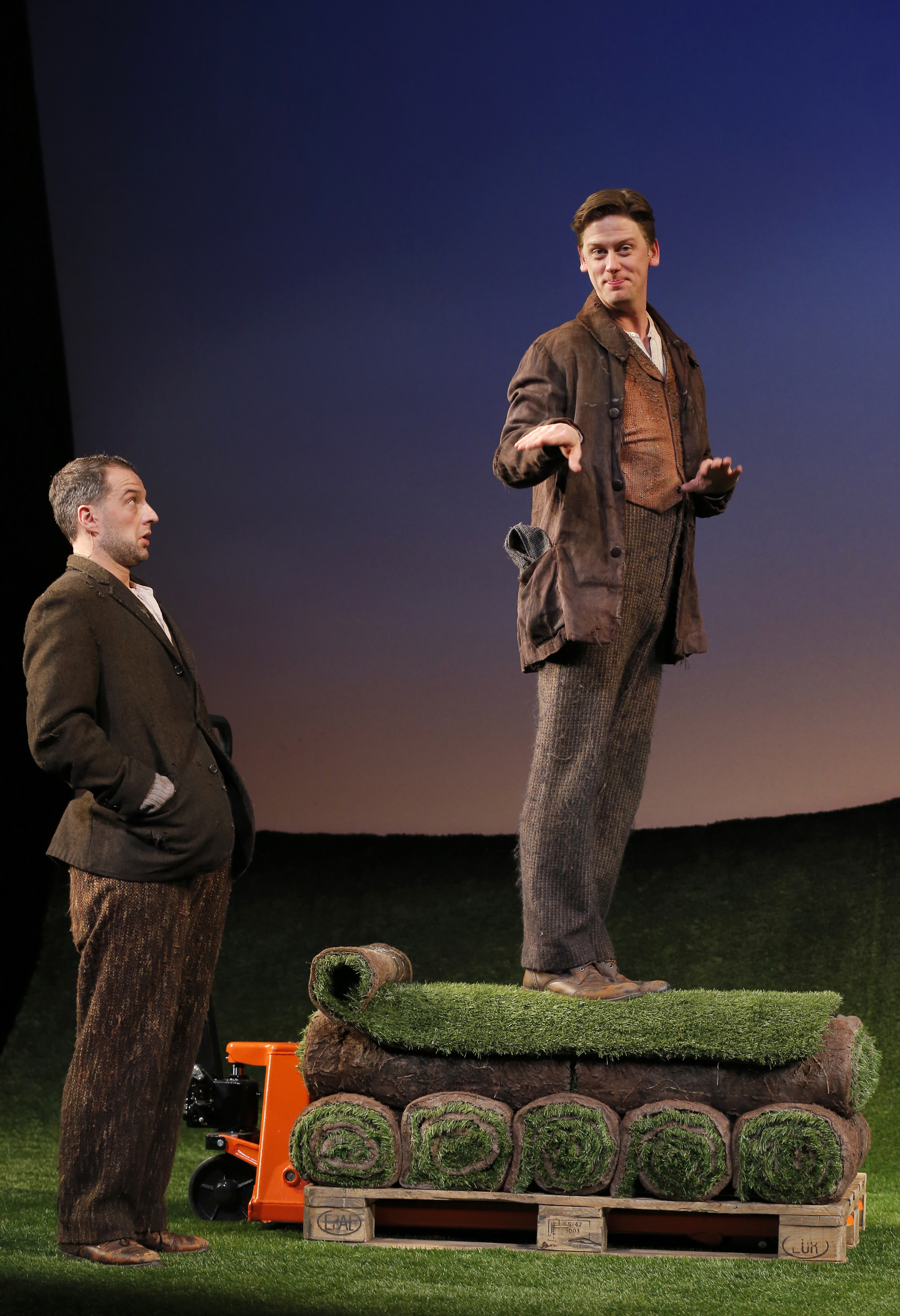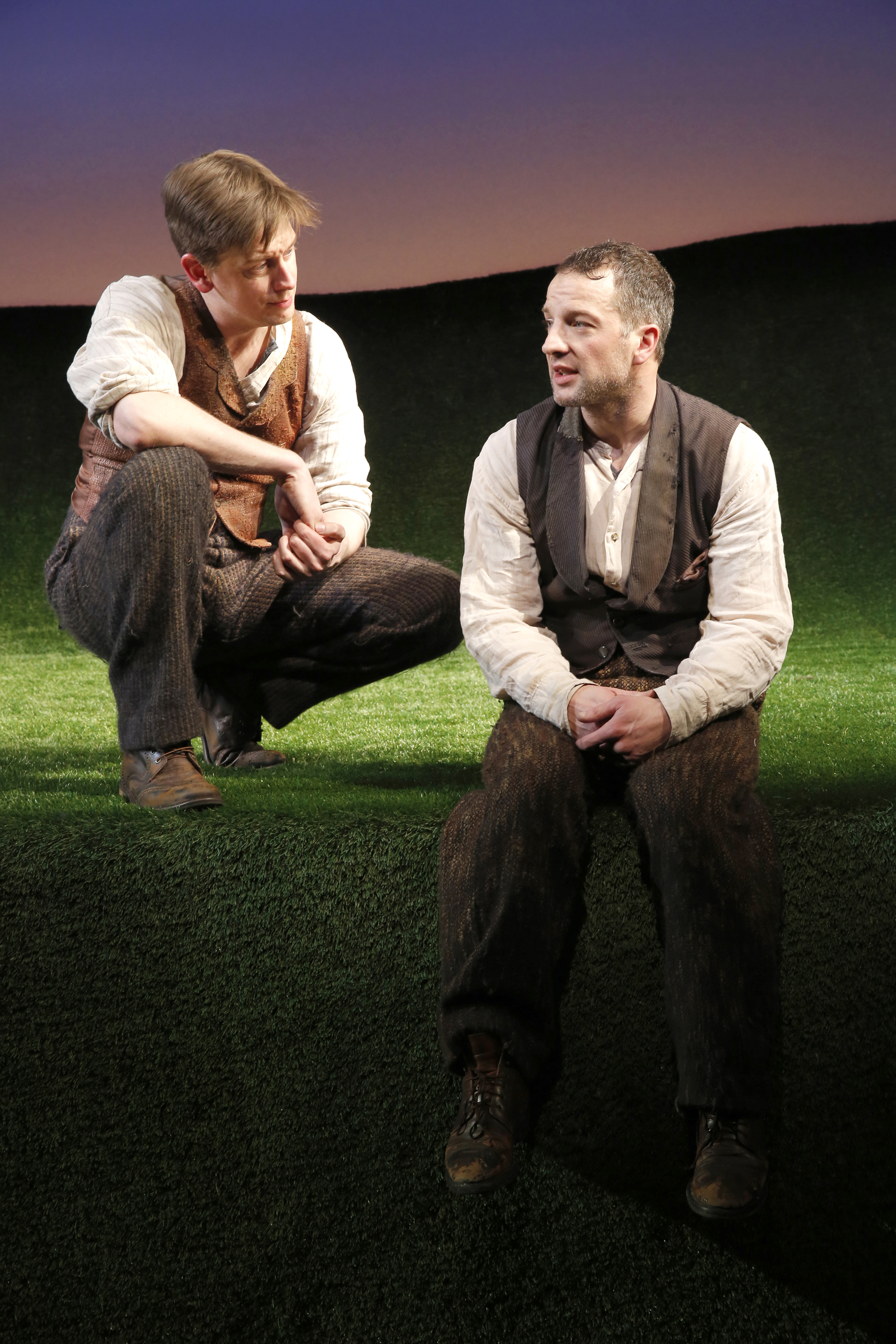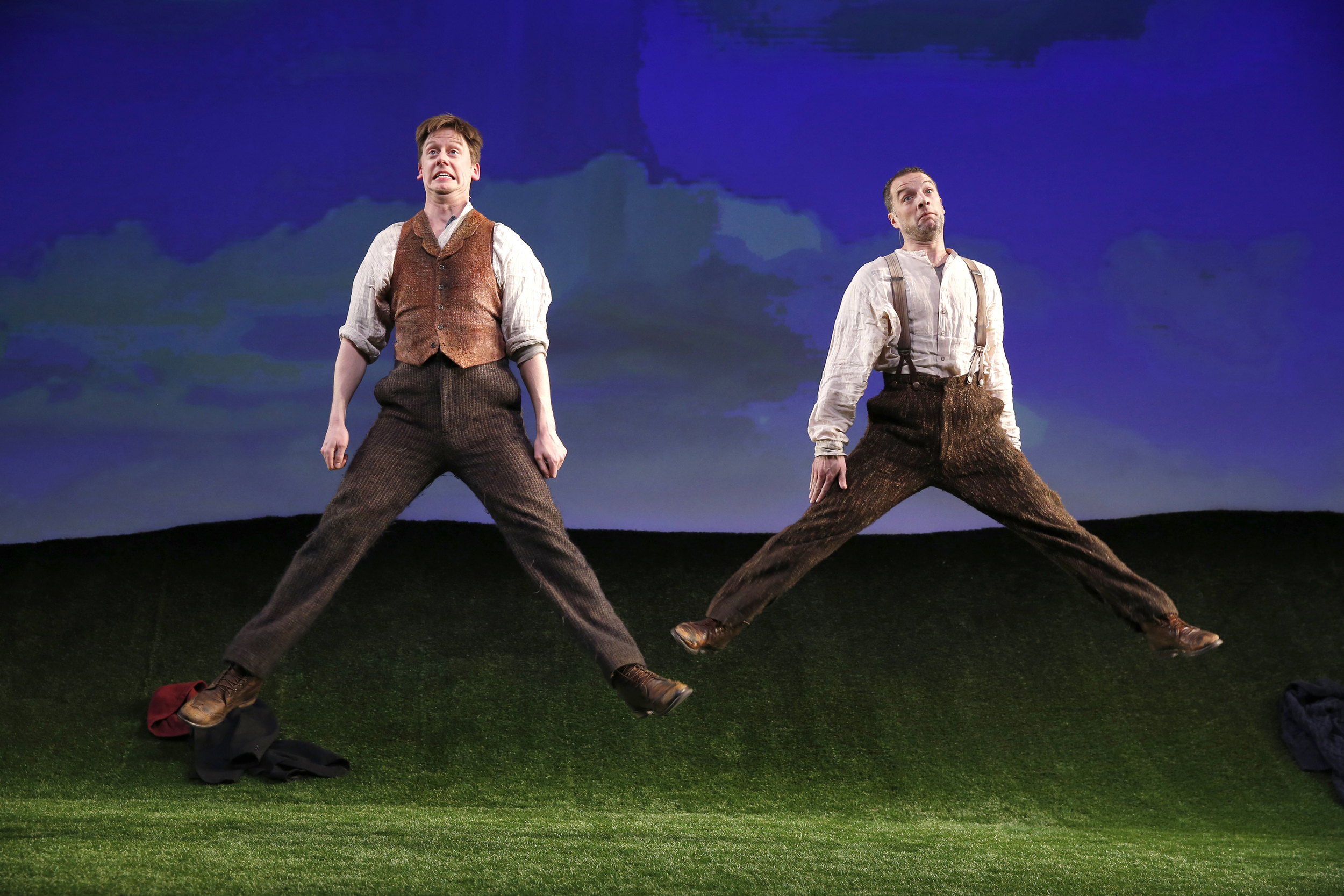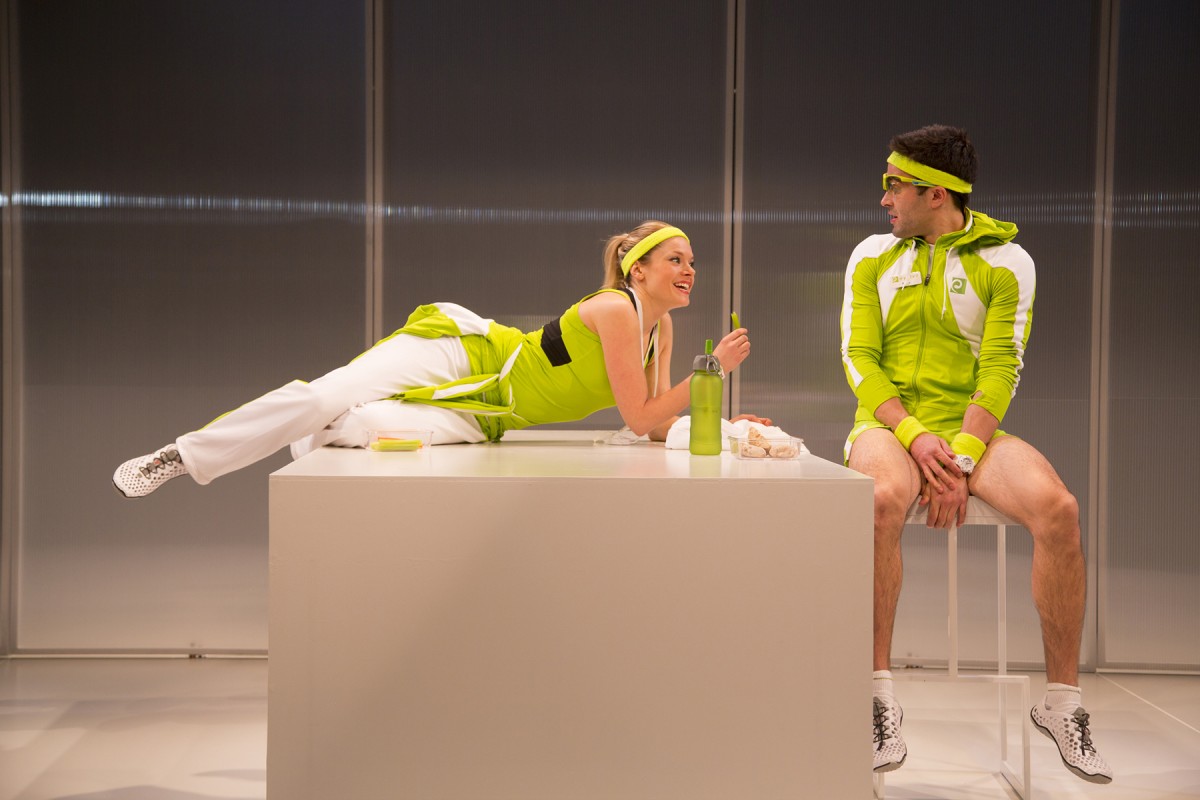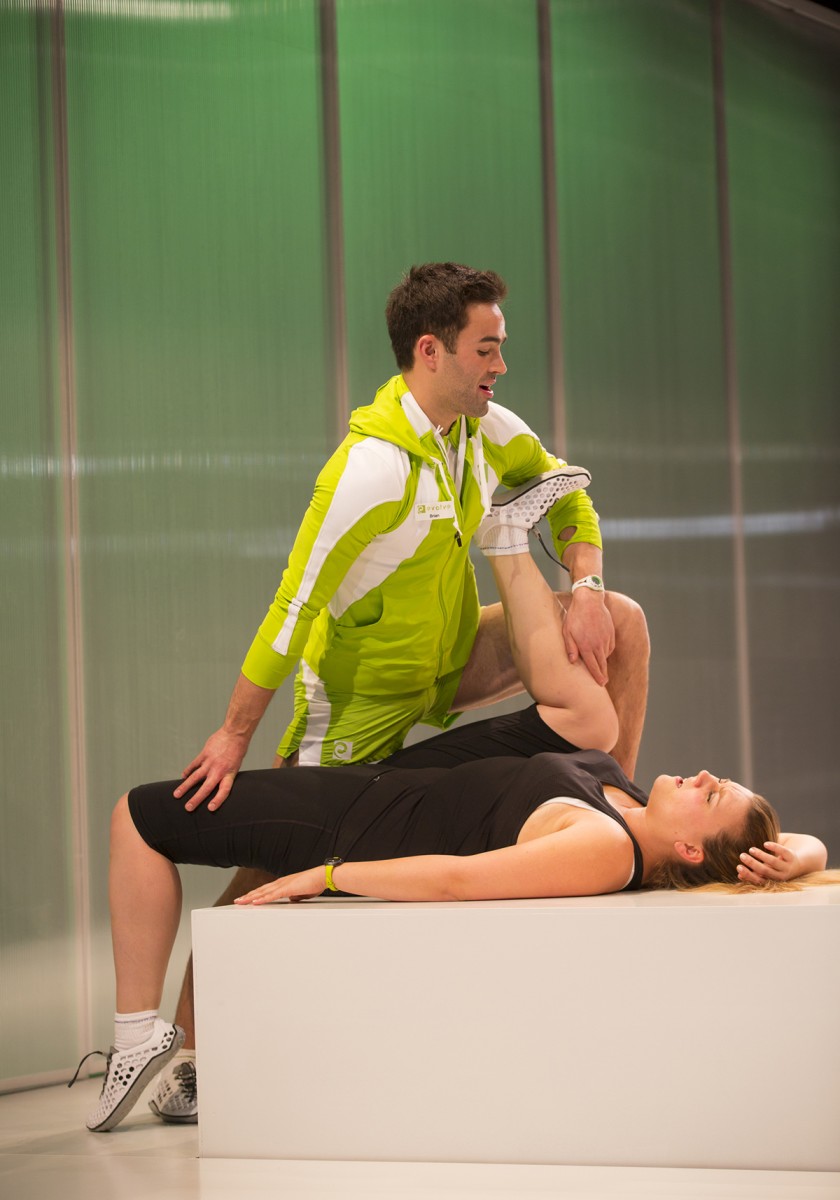Jackson Moran’s All This Noise, a one-man show at the Yale Cabaret, is a courageous exploration of one family’s hardships, made more gripping by the fact that the family is Moran’s own. Drawing a straight line on a wall with chalk, Moran proceeds to note key events in a linear series that is truly harrowing: From the early signs of mental instability in Moran’s younger brother Chris, who also suffers from seizures, to a tumor that ends their father’s life prematurely, to Moran’s and his brother’s alcoholism, to Chris’s suicidal tendencies, to a fateful surgical procedure that leaves Chris seriously impaired, to the indignities of cuts in mental healthcare that afflict New Jersey, where Chris is institutionalized. Along the way, Moran offers comments from mental health professionals—about Chris, specifically, from one very sympathetic care-giver at Hagedorn in New Jersey, and about the situation in NJ from someone involved in the politics of Governor Christie’s cuts. Moran takes on Christie himself in a staged community talk-back in which Christie (Moran gets at the Jersey-swagger of the man) tries to dodge an outright attack from Moran, as the latter grows more insistent about the contradictions in the public stance that says, in the wake of national tragedies like Newtown, “we must do more about mental healthcare,” while yanking the plug on institutions like Hagedorn. In other words, Moran has an ax to grind and the times we’re living through serve to whet it.
All This Noise is at its most appealing in showing Moran’s concern for his brother—who at one time had ambitions to be an actor—and the latter’s deterioration. The play is at its most moving in suggesting the human costs of mental illness, both for the patient and those close to him, particularly the young men’s mother. And Moran is at his most passionate in taking on the shallow political discourse that surrounds events like Newtown and the effort to address healthcare in the U.S.
The play is enlivened by moments such as Moran re-enacting his audition at YSD—a soliloquy from Hamlet, though perhaps the one about bearing “the slings and arrows of outrageous fortune” would be more apropos—and by jarring moments such as Chris’s breakdown at a Christmas party where a crescendo of voices apprizes us of how nightmarish even mundane social interactions can become.
All This Noise is certainly involving, and it poses many unresolved dramatic moments: in hearing of the trajectory of Chris’ condition, we only learn “the facts,” not much about how anyone, much less Chris himself, actually feels about what has occurred. Chris, despite photos from his life, remains a mystery at the heart of the play, a collection of catastrophes. We hear little about the decision to undergo an operation on his amygdala and why the procedure produced the outcome it did. Moran is not interested in assigning blame for Chris’s state, but rather in drawing-out its dramatic potential and poignancy—at play’s end we hear Chris recite after his brother, line by line, a poem he wrote. As a slice-of-life, the play is effective in making us sad that a life of potential has come to this pass. As a statement, the play aims to make us angry that mental healthcare remains such a low priority for many state governments.
Moran is impressively nuanced as an actor, likeable as a narrator, and quite skilled at keeping our attention and at providing glimpses of his life with Chris. The production is refreshingly free of caricatures and maintains a stripped-down intensity that aids its personal, confessional nature. All This Noise is a brave and unsettling tightrope walk across the abysses that lurk in real life.
All This Noise Created by Jackson Moran With Ethan Heard, Kate Ivins, and Martha Jane Kaufman
Additional text by Christopher Moran Additional script development with Alyssa K. Howard, Jack Tamburri, and Masha Tsimring
Director: Ethan Heard; Dramaturg: Martha Jane Kaufman; Scenic Designer: Souri Yazdanjou; Costume Designer: Seth Bodie; Lighting Designer: Masha Tsimring; Sound Designer: Matt Otto; Projection Designer: Nicholas Hussong; Stage Manager: Alyssa K. Howard; Producer: Kate Ivins
Yale Cabaret February 21-23, 2013
